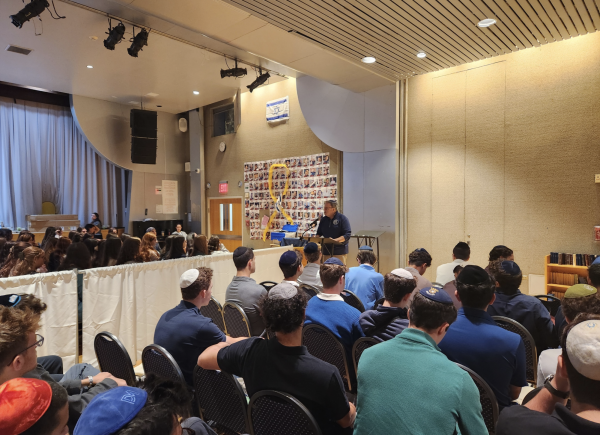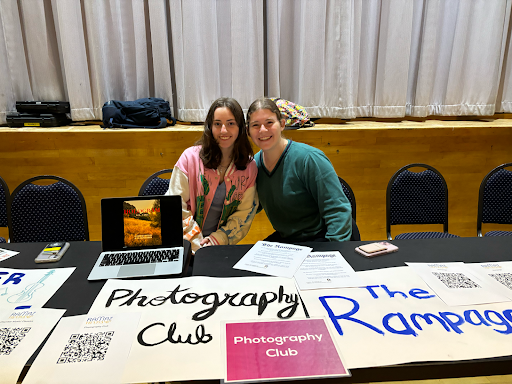A Responsibility for All Jews: February Break Mission to Moldova
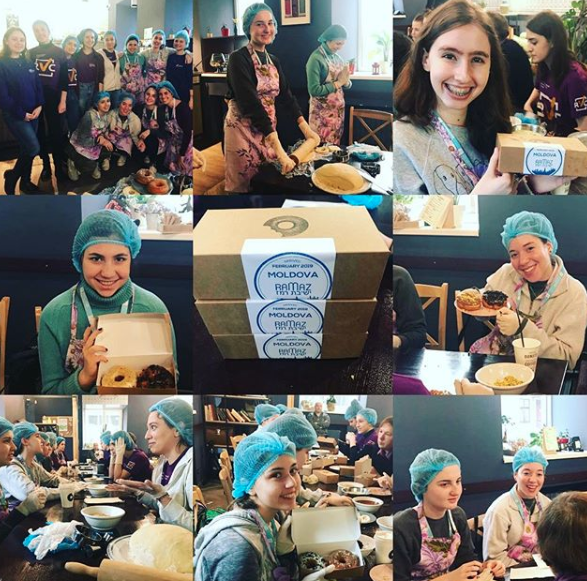
Trekking through the mud to a dilapidated house without running water or a bathroom, the five students on the Ramaz Mission to Moldova were expecting to find its resident, 18-year old Alexander, hopeless and ashamed. Instead, they met an upbeat, spirited teenager, who described his life as “happy.”
The trip to Moldova this past President’s Day break was coordinated by the Jewish Distribution Committee (JDC), a humanitarian organization providing resources such as food and medicine to suffering Jews throughout the world. JDC Development and Executive Officer Elisheva Massel worked in collaboration with Rabbi Yigal Sklarin to arrange the trip and later led the Ramaz group on their mission.
As Ramaz students helped Rabbi Sklarin pack bags of American gifts, they expected a mission to revive Judaism in Moldova or to raise the spirits of isolated Jews. However, Rabbi Skarin explained that Ramaz’s goal was to “expose students to both the incredible work that the JDC does around the world and to the Jewish experience in different and diverse places.”
Post Shabbat, on February 9, Talia Halaas ’21, Keren Kubersky ’21, Rebecca Massel ’21, Sophia Rein ’21 and Samantha Sinensky ’21, convened with Ms. Tammie Senders (their teacher) and Elisheva at JFK International Airport. After a layover in Istanbul, Ramaz arrived in Kishinev, Moldova.
Moldova is part of the former Soviet Union and is sandwiched between Ukraine and Romania. It is also the poorest country in Europe. According to Rabbi Sklarin, the school hoped “students would get to see the dire circumstances and abject poverty that many Jews face in one of the poorest countries in the world.”
Ramaz students were welcomed at the Kishinev International Airport by Hebrew singing, colorful handmade posters, and balloons. Although it was 10PM on Sunday night, Moldovan Jewish teenagers and JDC activity coordinators—Violetta and Veoralia—accompanied the Ramaz group to their hotel.
The first morning began with a tour of the Kishinev Jacobs Jewish Campus (KJJC), a community center that hosts the Hesed Day Center and Haverim Programs. The Hesed Day Center supports families and elders by engaging them in group activities, such as the elderly sewing club that the students visited. There, the elderly gave the Ramaz students beautiful handmade floral aprons.
Next, Ramaz visited Hesed member Nora and the elderly women she hosts throughout each week. Each student showed a group of elders pictures of their family back in America. The Moldovan women also showed tattered and faded photographs taken before the war during the era of the Soviet Union. It was clear that most— or even all—of the family members shown in the photographs were no longer alive or living in Moldova. As the students were leaving, Nora gifted them with hand-painted bells. “Whenever you want to remember us, ring these bells,” said Nora. Ms. Senders shared that “they experienced a real kinship with us and a recognition that we are their collective continuity.”
Ramaz went to the basement of the KJJC to see the modest synagogue from the time of the Soviet Union. While hiding from the KGB, Jews would come to pray and learn. The synagogue’s brick walls were recently restored so the room could be used for prayer once again.
Surrounded by the renovated synagogue, Ramaz students heard from Rabbi Shimshon D. Izakson, chief rabbi of Moldova. He discussed his own religious background—he was raised by non-affiliated Jews in Belarus—and how he became religious, committed to serving the 20,000 Moldovan Jews.
The Ramaz students toured Jewish Kishinev. Like most countries in Eastern Europe and the former Soviet Union, Jewish-Moldovan history is dark. In 1903 and 1905, Moldovan Jews endured a series of brutal pogroms. General anti-Semitic attitudes in the country have persisted to this day.
There, the students walked through the Jewish Kishinev Cemetery, which was recently turned into a museum. There were tombstones ripped from the ground, with dirt and grime covering the engravings. The students moved along the wall surrounding the cemetery, which was built using old tombstones. Recently, the cemetery was vandalized, and Rabbi Izakson and the community are in the process of cleaning up the demolished resting place.
At the Jewish Center in Kishinev, Ramaz celebrated with Moldovan locals by dancing together to live Klezmer, Yiddish folk music. The community was celebrating a birthday party for a Moldovan, and the Ramaz studently eagerly joined in. “I was excited to join in the dancing,” said Talia Halaas ’21.
Meeting the teenagers of Kishinev at their Haverim youth club was the highlight of many students’ experience. To break the ice between the students from opposite sides of the world, pre-prepared quizzes about each country were played by each country’s respective teenagers. “I think it helped the Ramaz students see how alike they and their Moldovan counterparts are,” said Ms. Senders. The teenagers danced together in a flash mob because dancing is a language understood around the world. Keren Kubersky ’21 said, “At first it was a little awkward, but after discussing social media, our favorite subjects in school, and hobbies, it really made me realize how similar we are to the teens.”
Throughout dinner, the Moldovans and Americans laughed and shared stories. All food during the trip was provided by the Hay Synagogue, the only source of kosher food in all of Moldova. It is nearly impossible to keep kosher in the country, so out of the twenty thousand Jews, only ten families observe these mitzvot.
The next day began with a sweet start. The Ramaz students met with Moldovan teenagers to decorate donuts which would be given to elders in the community. “A highlight for me was watching teens from Ramaz and [from Moldova] realize that they have so much in common and so much to mutually learn from one another,” said Elisheva. The Americans really enjoyed conversing with the foreign students, and many were surprised to see how much they had in common with them despite their wildly different backgrounds.
The Ramaz mission then split up into two groups to visit the homebound elderly. Two students spent the hour with Iraida Gotgelf, a 95-year-old Siberia survivor. Iraida was sent to Siberia at 14-years-old, where she met her husband, a painter, and had Alexander, her son, who was born with disabilities. Iraida dedicated her life to caring for Alexander, and after being liberated from Siberia in 1961, she crafted and sold paper flowers to raise money for her struggling family. Iraida now lives alone, but before the start of every Shabbat, she lights candles with her caregiver and JDC volunteers.
The students saw firsthand the apartments that the Soviet Union gave to impoverished families. Despite her son’s disabilities, in 1961, Iraida was placed in a third-floor apartment with one bedroom, one bathroom, and a cramped kitchen. Iraida left the students with a message of resilience: people do not choose their challenges, she noted, but everyone is capable of overcoming what fate throws at them with a smile.
At the same time, the other three students visited Iosif Toporovskiy. Born in Kiev, Ukraine, Iosif’s family was separated during World War II. As the war raged on, Iosif, his mother, and his brother were sent to the Novosibirsk region while his father fought in the army. After the war, the family reunited and moved to Kishinev, where Iosif became a mechanical engineer. Iosif had a son with his first wife, and, after her passing, remarried. His second wife recently passed away.
Iosif’s house was supposed to be demolished and the family was supposed to be given a new home, but instead only his son’s apartment was demolished. Iosif’s son moved out and now, at eighty-one years old, Iosif lives alone in a house that is half-rubble without properly functioning utilities.
Iosif expressed his gratitude for the students’ visit. He was upbeat and excited to see them, and he grew even more exciting after one of the Ramaz students discovered a potential family connection between herself and Iosif. Iosif said he would not forget Ramaz’s visit anytime soon.
As much as the students connected to the teenagers, the most conspicuous difference between the Americans and the Moldovans was financial security. Surprisingly, this was not a taboo subject, and the Moldovans gave the students an idea of the financial struggles that locals deal with on a daily basis. For example, elderlies receive a monthly pension of $85, compared to $1,412 in America.
On the final day, Ramaz left the more commercial and urban Kishinev and went to Beltsy. Even poorer and more remote, Beltsy’s Jewish community is smaller than that of Kishinev. Despite this, there is still a vibrant Jewish presence, which is centered at the Hesed Yakov Day Center. There, Ramaz students sat in on a group activity for elderlies, who were learning how to prevent themselves from falling, remain mobile, and preserve their memories. Together, they sang Hebrew songs.
Perhaps the hardest thing to witness was the living conditions of Alexander and Tatiana Dunaeva, 18 and 16-year-old siblings who have been living on their own for five years. When their father passed away, their mother moved to Moscow to earn more money. As a restaurant cook, she sends most of her meager salary to her children. Without running water, the siblings have a well outside their house and recently built an outhouse for themselves. Their one bedroom house is very cold, and they cook meals for themselves on a coal stove. “It was really heartbreaking to hear Alexander’s story,” said Keren Kubersky ’21. Despite living in these beyond horrible conditions, Alexander is nonetheless a happy man and hopes to one day earn a living that would allow him and Tatiana to live a better.
The second Beltsy resident they visited was Chaka Katz, a Holocaust survivor. At eighty-eight, Chaka lives alone in a home much like Alexander’s. Her water comes from the local well and there is no plumbing in her house. Chaka told the students, “When you have health, you must be grateful, for with health you can achieve anything.” She encouraged them to reflect on their blessings in life and appreciate them.
Chaka, or any of the other people Ramaz visited at home, would not survive without the help of the JDC. The Jewish Distribution Committee provides them with food, medicine, winter relief, and financial aid. Not only does the JDC provide resources meant to sustain these populations, they also enable programs like Haverim and Hesed to join Jews together in a community.
Another youth club supported by the JDC is PikaJew, located in Beltsy. PikaJew allows teenagers to come together to dance, sing, and play games. “It was very meaningful for me to meet teenagers who are so isolated and have so little, yet they were able to find some happiness,” said Sophia Rein ’21.The Ramaz students had the opportunity to join the excitement. They learned the American-style dances and were, once again, amazed at how easy it is to communicate through dance.
Throughout the mission, the Ramaz students as well as the Moldovans did their best to communicate. Violetta and Veoralia aided by translating during the home visits with elderly people. Most of the Moldovan teenagers learn English at school, and the American teenagers were impressed by their communication abilities. When needed, Google Translate also helped bridge the language barrier. According to Talia ’21, despite the language barrier, “The people were so welcoming. Their excitement to see us will continue to inspire me to keep a positive attitude.”
Observing such lively Jewish communities in Moldova, it was clear to the Ramaz delegation that their mission was not to support a withering Jewish community, but to understand how Judaism is observed in a different part of the world. If anything, the Ramaz group was strengthened when they saw people who lived incredibly happy and warm lives regardless of their limited possessions. The students learned that at the end of the day, all Jews are responsible for one another. The delegation returned to America with an understanding that it is each of their responsibilities to relay these insights and share them with the entire Ramaz community.
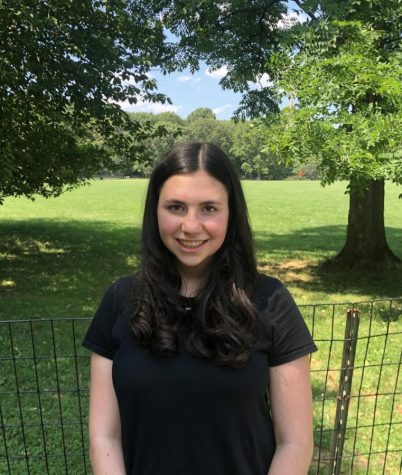
Rebecca Massel has been a journalist since lower school and is excited to be an editor-in-chief of The Rampage. She has been an active writer for the paper...
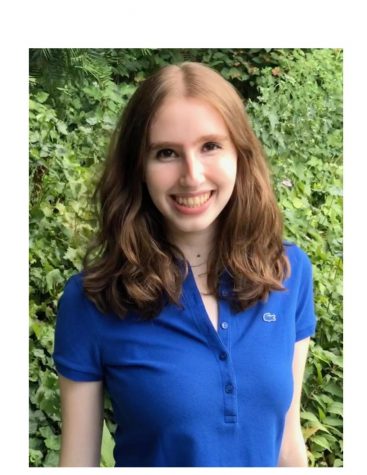
Samantha is a passionate journalist and loves writing for The Rampage because it is a window into the life of the student body that honestly reports true...

